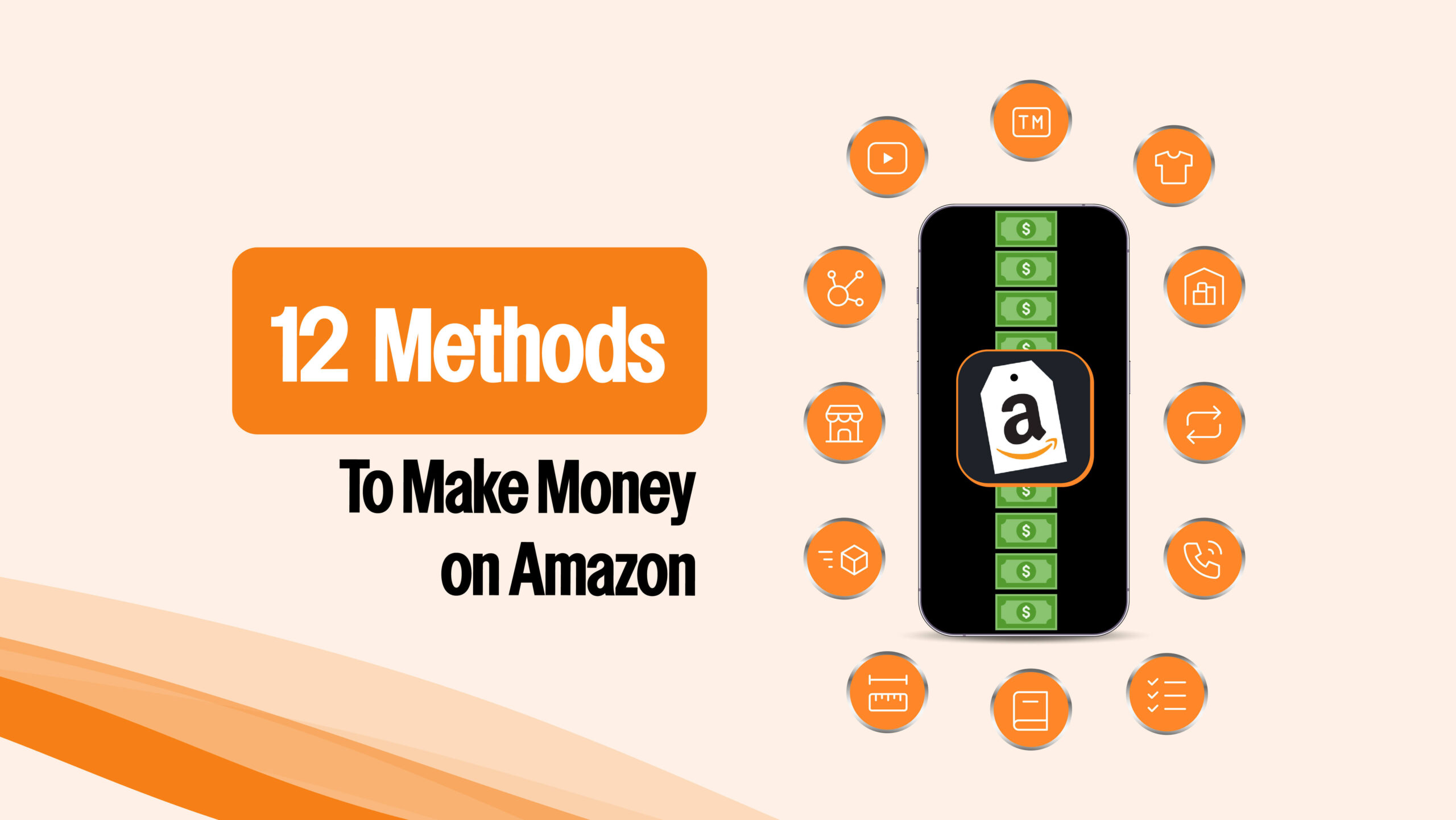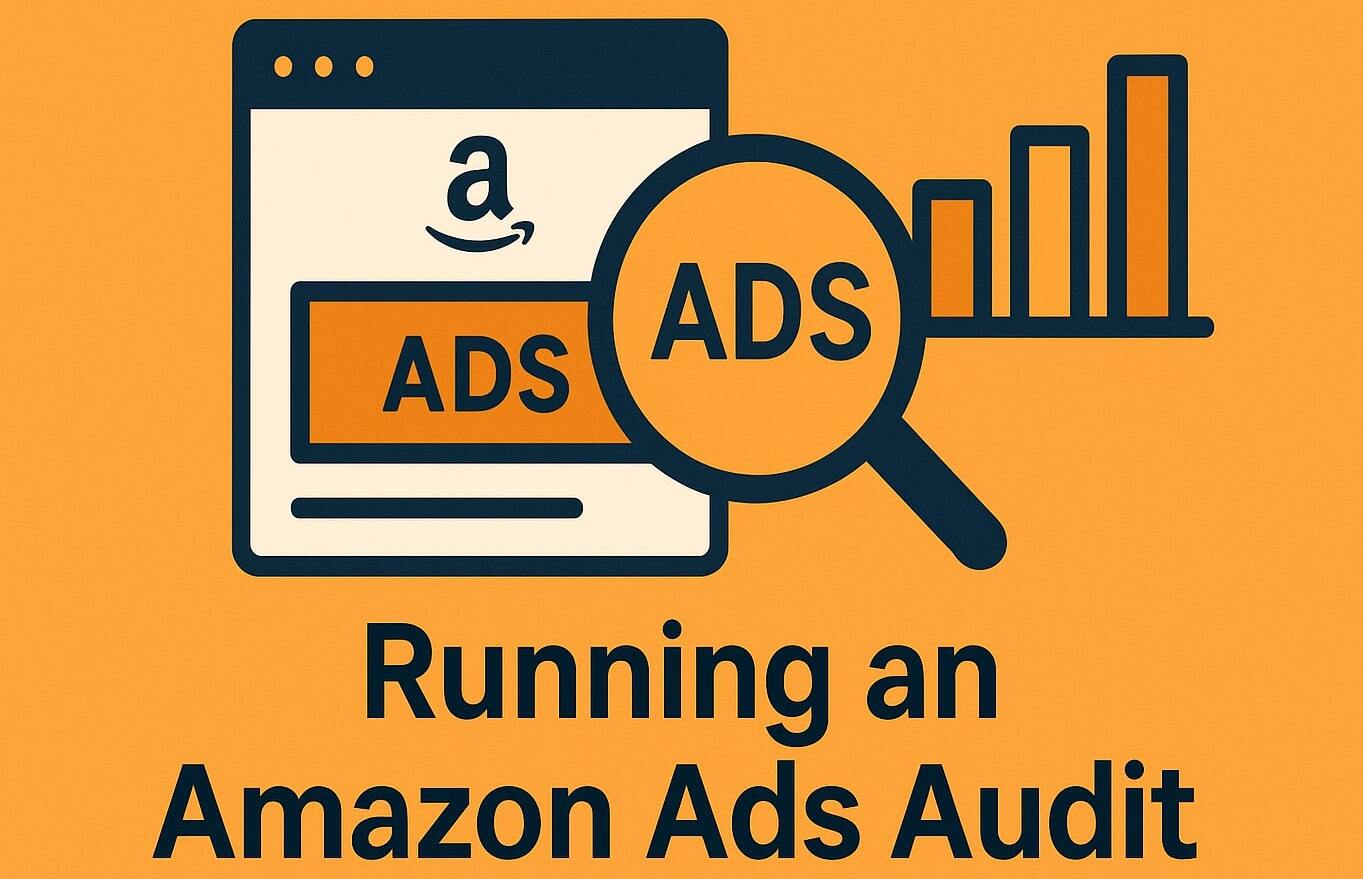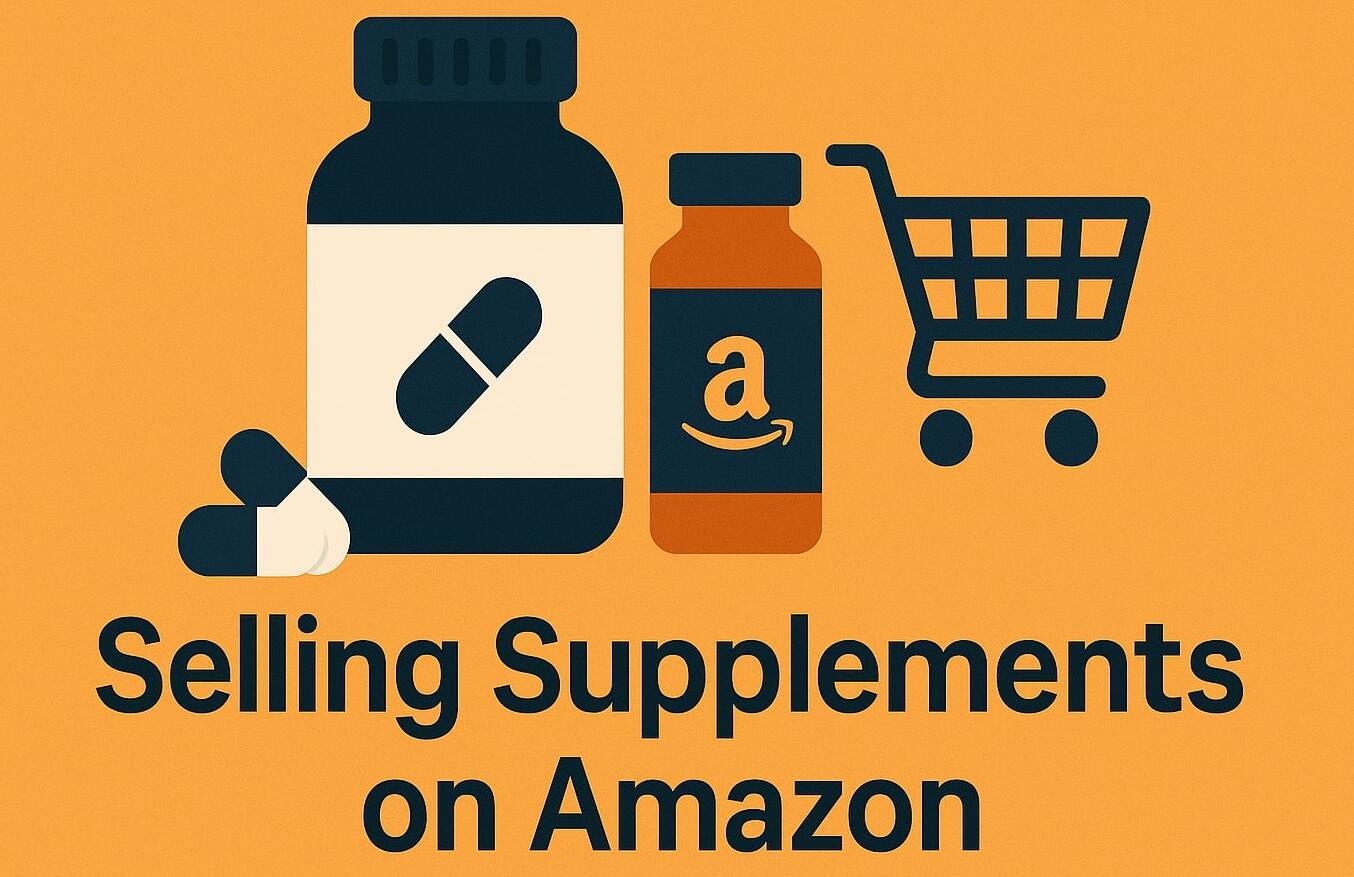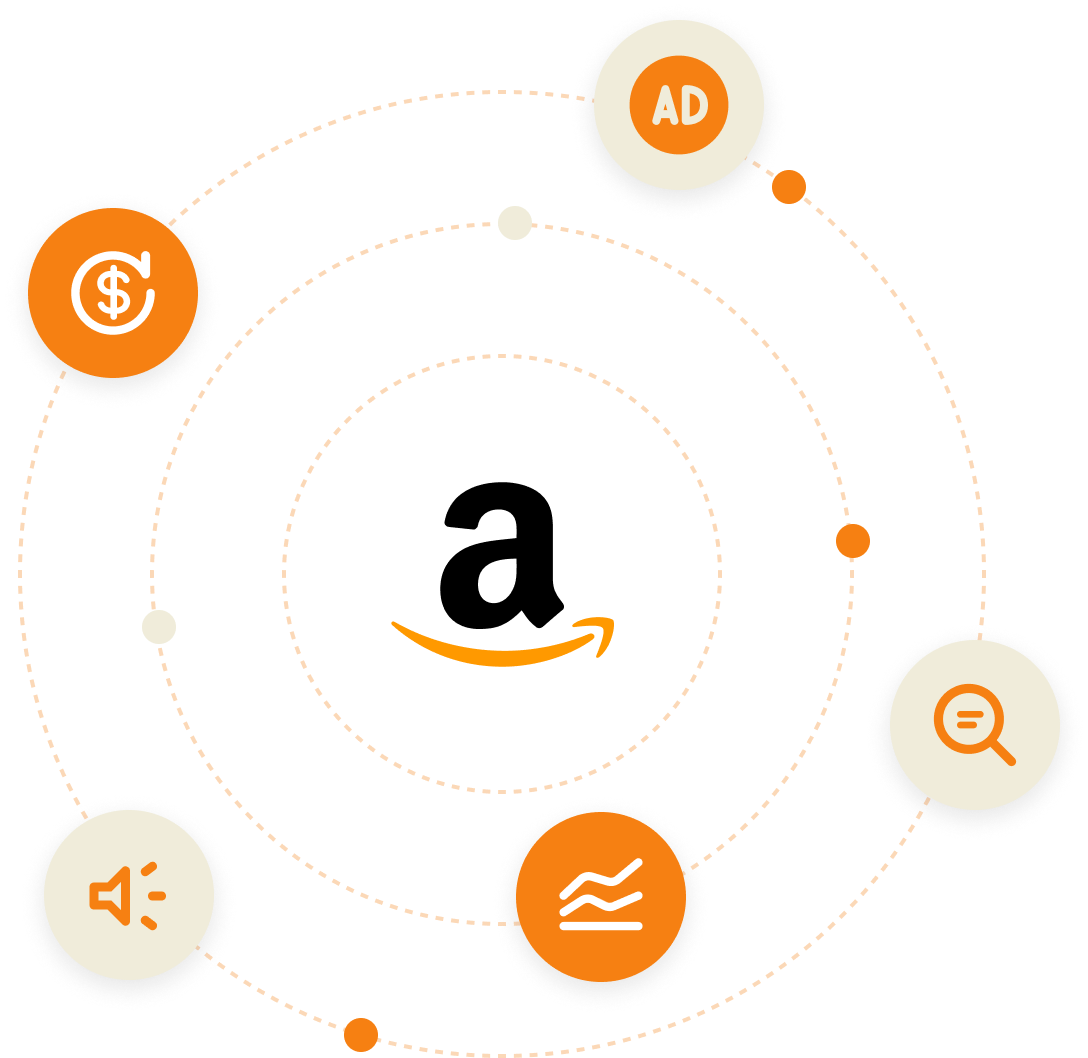Amazon reported revenue of $158.88 billion for the third quarter of 2024, marking an 11% increase from $143.08 billion in the same quarter of the previous year.
Not only is Amazon not halting its popularity growth, but, as numbers show, it is constantly expanding. This makes Amazon one of the most profitable platforms for individuals and businesses to make money.
Can you actually make money as a beginner on Amazon, though? And if so, how?
In this article, we’re taking a closer look at the best proven methods to make money on Amazon as a beginner — so keep reading if you want to find out more.
Is Your Amazon Store Reaching Its Full Potential?
Discover hidden opportunities, reduce wasted spend, and boost your sales with a free expert audit.
Our team will analyze your listings, ad performance, and overall account health to uncover exactly what’s working—and what’s holding you back. You’ll get a tailored blueprint to scale smarter, not harder.
Get a Free AuditMethod #1: sell on Amazon
Selling private label products on Amazon has become a go-to business model for entrepreneurs around the globe. With its massive customer base and established trust among buyers, Amazon offers an unparalleled opportunity for individuals to set up profitable online ventures.

How much money can you make selling on Amazon?
The amount of money you can make selling on Amazon varies widely and depends on factors like the types of products you sell, your profit margins, and how effectively you manage your business.
Many sellers start small, making a few hundred dollars a month, but with the right strategies, some scale their businesses to generate tens of thousands or even millions in annual revenue. Success often hinges on proper product selection, pricing, and efficient operational management.
All in all though, according to research, nearly 20% of sellers earn more than $100,000 annually. A significant portion of sellers, around 60%, report making a profit within their first year of selling.
How to start selling on Amazon
Although it takes some time to ramp up earnings to your goals, getting started with selling on Amazon is fairly easy. More specifically, you need to:
Find a niche or product category
The first step to selling on Amazon is identifying a product category or niche that has demand but isn’t oversaturated. Use tools like Amazon’s Best Sellers list, Jungle Scout, or Helium 10 to research product trends, customer reviews, and competition.
Picking the right product involves a fine balance between market demand, profit margins, and the ability to differentiate yourself from competitors.
Leverage the Amazon FBA program
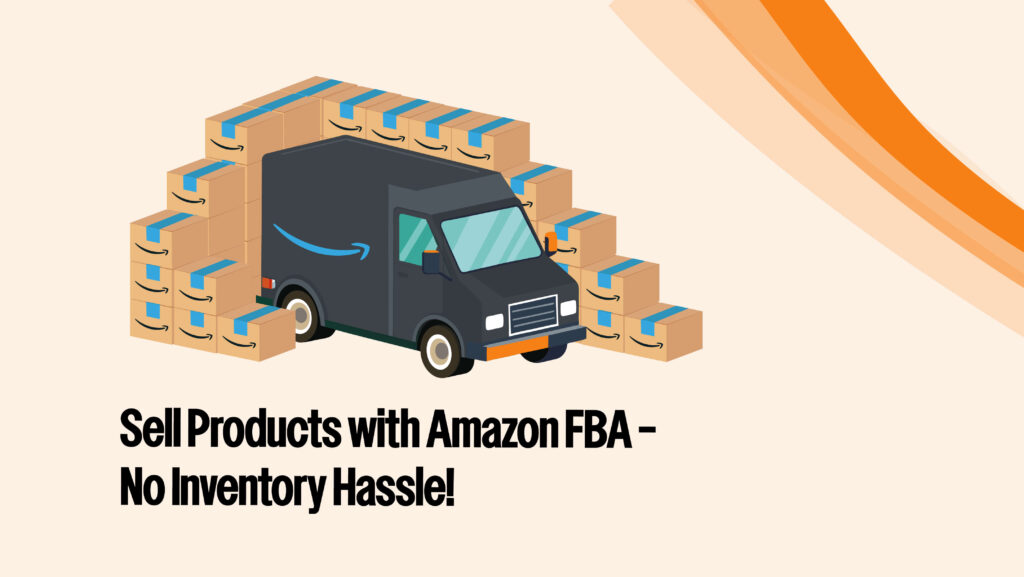
Amazon’s Fulfillment by Amazon (FBA) program simplifies logistics, allowing sellers to store their products in Amazon warehouses. When a customer orders a product, Amazon handles the picking, packing, shipping, and even customer service.
This program enables sellers to focus on scaling their business while benefiting from fast and reliable shipping. FBA also enhances the chances of winning the Buy Box, which is critical for higher sales volume.
Optimize your product listings
An optimized product listing makes your products more visible to potential buyers while increasing conversion rates. Focus on creating informative, keyword-rich titles, detailed bullet points, and compelling descriptions.
Use high-quality images and video to demonstrate product value. Additionally, take advantage of Amazon’s A+ Content Manager if you are a Brand Registered seller to provide a richer shopping experience for your customers.
Use sponsored ads to boost visibility
Amazon Sponsored Ads can significantly improve the visibility of your products, especially in highly competitive categories. By strategically investing in pay-per-click (PPC) campaigns, you can drive traffic to your listings and increase sales.
Utilizing tools such as Amazon Advertising Console to monitor and refine your campaigns will ensure you’re achieving a high return on investment.
Maintain great customer feedback
Positive customer reviews are the lifeblood of any successful Amazon business. It’s essential to deliver high-quality products and provide outstanding customer service to encourage positive feedback.
Implement strategies such as following up with customers post-purchase to ask for honest reviews while adhering to Amazon’s policies. Managing your seller ratings and responding promptly to any customer queries or issues builds trust and enhances reputation.
Learn more about selling on Amazon
If you want to learn more about selling on Amazon, you’re in luck: there’s quite a bit of information available for you out there. The video below is a good starting point, but you can always refer back to our blog for specific information on, for example:
- Amazon PPC
- Amazon conversion rate optimization
- Amazon product lifecycle strategy
- Amazon influencer marketing vs Amazon PPC

Publish your own books on Amazon KDP
Starting a business on Amazon has become an increasingly popular way to earn money online. Whether it’s through selling physical products or leveraging Amazon’s Kindle Direct Publishing (KDP) platform, the method offers a scalable and accessible entry point into e-commerce.
Here’s a breakdown of how it works and what you need to know.

How much money can I make by selling on Amazon?
The potential earnings from selling on Amazon can vary widely depending on your niche, product selection, and marketing efforts. Some sellers make a few hundred dollars a month as a side hustle, while others generate six-figure or even seven-figure incomes annually.
In the end, Amazon KDP success depends on building a strong brand, offering quality products, and effectively managing your listings and ads. With Amazon’s vast customer base, the earning potential is high, but it requires dedication and strategy.
How to start Amazon KDP
Amazon KDP (Kindle Direct Publishing) is a straightforward way to publish and sell eBooks or print-on-demand paperbacks without needing a large upfront investment. Here’s how to get started:
- Create an Amazon KDP account.
- Write or outsource a book in a niche you’re passionate about or that has high demand.
- Design a professional book cover and format your manuscript.
- Upload your book to KDP, set your pricing, and publish it.
Amazon handles the printing, shipping, and distribution, allowing you to focus on marketing your book to drive sales.
Pros & Cons
Like any business model, selling on Amazon comes with its own set of advantages and challenges. Here are some of the most notable ones:
Pros:
- Large customer base: Access to Amazon’s massive customer base is a good starting point for your business
- Minimal upfront costs: Depending on what you want to sell, upfront costs may be lower than with traditional selling methods
- Passive income potential: With proper optimization, your Amazon store can become a passive (or at least semi-passive) source of income
- Streamlined logistics with FBA (Fulfilled by Amazon): You don’t need to own a warehouse or deal with transportation and logistics providers, as Amazon has that covered for you through FBA
Cons:
- Highly competitive in many niches: The market can be intensely competitive across various niches, making it essential for sellers to differentiate their products and strategies effectively.
- Amazon fees can reduce profit margins: You should account for profit margin loss as a result of paying Amazon fees (but also keep in mind the advantages that come with Amazon and how those will influence your profitability)
- Requires time and effort: To build a successful store or product line, you will have to invest some time and effort (but it is not impossible)
- Dependence on Amazon’s policies and algorithms: Amazon’s policies and algorithms have been fairly stable over the last few years, but you should still account for potential changes in the future.
Method #2: Sell wholesale products
Selling wholesale products involves purchasing items in bulk at discounted prices from manufacturers or distributors and reselling them at a higher price to consumers.
This model offers the opportunity to cater to a wide audience while maintaining competitive pricing. It is a scalable and straightforward option for entrepreneurs looking to run a product-based business.
How much money you can make
The amount of money you can make selling wholesale products depends on several factors, including the demand for your products, your profit margins, and the volume of your sales.
Businesses with strong supply chain management and competitive pricing can achieve significant revenue.
High-performing wholesale sellers often generate consistent profits ranging from a few hundred to thousands of dollars per month, depending on the products and their market niche.
How to start selling wholesale on Amazon
To begin selling wholesale products, follow these key steps:
- Research your market: Identify products that are in demand within your target audience.
- Find reliable suppliers: Partner with reputable manufacturers or distributors that offer quality products at reasonable prices.
- Set up your sales platform: Choose a marketplace like Amazon or create your own e-commerce website to list and sell your products.
- Create a pricing strategy: Determine competitive pricing while maintaining healthy profit margins.
- Order inventory: Purchase your chosen products in bulk from your supplier.
- Market your products: Promote your offerings through ads, social media, or content marketing to drive customer interest.
Pros and cons
Some of the most important pros and cons of selling wholesale on Amazon include:
Pros:
- Scalability: Buying in bulk allows for significant cost savings and higher profit potential.
- Wide product selection: With access to numerous suppliers, you can diversify your inventory and cater to various customer needs.
- Built-in audience: Selling wholesale through established marketplaces can connect you with an already active buyer base.
Cons:
- Large upfront investment: Purchasing inventory in bulk can require significant initial capital.
- Storage needs: Managing and storing inventory may become a challenge, particularly for large quantities.
- Market competition: High competition in popular categories may make it harder to stand out.
Method #3: Become an Amazon affiliate
Becoming an Amazon affiliate is an excellent way to earn passive income by promoting products sold through Amazon.
The Amazon Associates program allows you to earn commissions by sharing affiliate links to products and earning a percentage of the sales generated through your referrals.
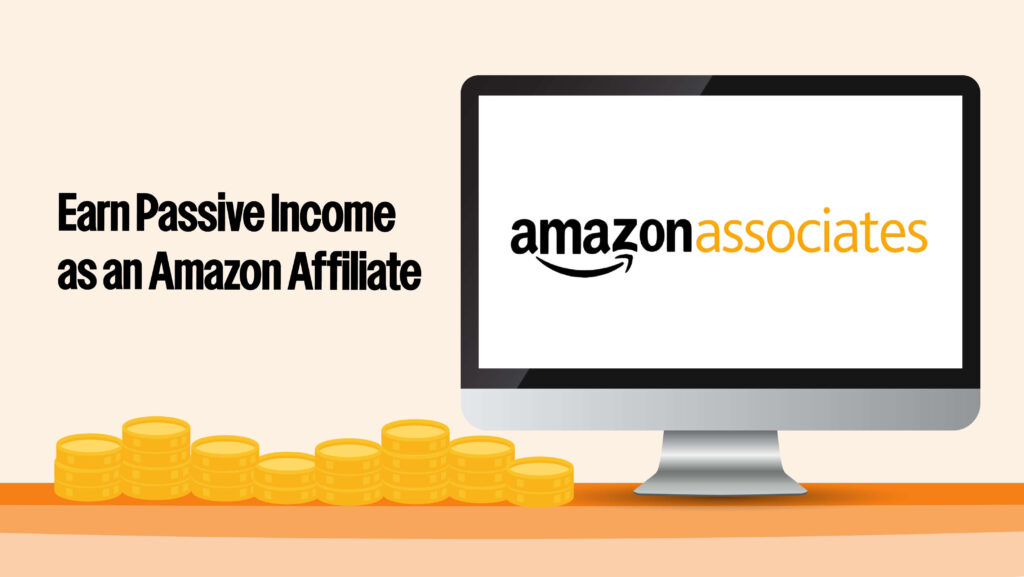
How much money you can make
The amount you can earn as an Amazon affiliate depends on the traffic you drive and the types of products you promote. Amazon offers commission rates ranging from 1% to 10%, depending on the product category.
For example, promoting higher-ticket items or popular categories like electronics can yield greater returns, while lower-margin categories may produce smaller commissions. Success often depends on your ability to consistently drive significant traffic and conversions.
How to start with Amazon Affiliate programs
Getting started as an Amazon affiliate is straightforward. First, sign up for the Amazon Associates program by creating an account on their platform. Next, choose products relevant to your audience and generate unique affiliate links through your dashboard.
You can then share these links on your website, blog, or social media platforms. It’s important to follow Amazon’s guidelines for disclosures and usage to ensure compliance with their Terms of Service.

Pros and cons
The most important pros and cons of being an Amazon affiliate include:
Pros:
- Ease of entry: The Amazon Associates program is beginner-friendly, with a straightforward setup process.
- Broad product selection: With millions of products on Amazon, you can find items that align with virtually any niche or audience.
- Trusted brand: Amazon’s established reputation can inspire confidence in buyers, improving conversion rates.
Cons:
- Low commission rates: Depending on the category, commissions may be relatively small compared to other affiliate programs.
- Cookie duration: Amazon’s 24-hour cookie policy means you only earn from purchases made within a short window after the customer clicks your link.
- Competition: The ease of entry means there are many affiliates promoting similar products, making it harder to stand out.
Method #4: Create content as an influencer
Becoming an influencer is a popular way to create content and monetize your online presence. Whether you have a modest following or a large audience, there are opportunities to earn while sharing content you are passionate about.
How much money you can make
The income potential for influencers varies widely depending on factors such as niche, audience size, engagement rates, and the quality of partnerships you secure. Influencers with smaller but
Highly engaged audiences (often called micro-influencers) can earn hundreds to thousands of dollars per sponsored post, while those with larger followings may secure deals worth tens of thousands per campaign.
Additional revenue sources include affiliate marketing, selling exclusive content, merchandise, or even launching courses.
How to start as an Amazon content creator
To start as an influencer, begin by identifying your niche and the audience you want to target. Consistent posting on platforms like Instagram, YouTube, TikTok, or others is key to growing your presence. Engage with your audience through meaningful content and interactions to cultivate trust and loyalty.
Once you’ve built a substantial following, you can reach out to brands or join influencer marketing platforms to find collaboration opportunities. Additionally, understanding how to analyze your audience insights will help you position yourself as an attractive partner for brands.
Pros and cons
There are some advantages and disadvantages to this method of making money on Amazon:
Pros:
- Flexibility: You have control over your schedule, content, and collaborations.
- Creativity: It allows you to turn your passions and skills into content that resonates with your audience.
- Income sources: Multiple streams of income are possible, beyond just sponsored posts, such as digital products and affiliate marketing.
Cons:
- Time-intensive: Growing an audience to a viable level can take a lot of time and effort.
- Uncertainty: Income can be inconsistent and dependent on collaboration opportunities or platform algorithms.
- Management: Balancing content creation, brand deals, and audience expectations can be overwhelming without proper planning.
Method #5: Do online arbitrage
Online arbitrage is a business model where you purchase products at a lower price from online marketplaces or even brick-and-mortar stores and sell them for a profit on platforms like Amazon, eBay, or other e-commerce platforms.
This method allows entrepreneurs to leverage price mismatches between different marketplaces without the need for creating their own product or maintaining physical inventory in many cases.
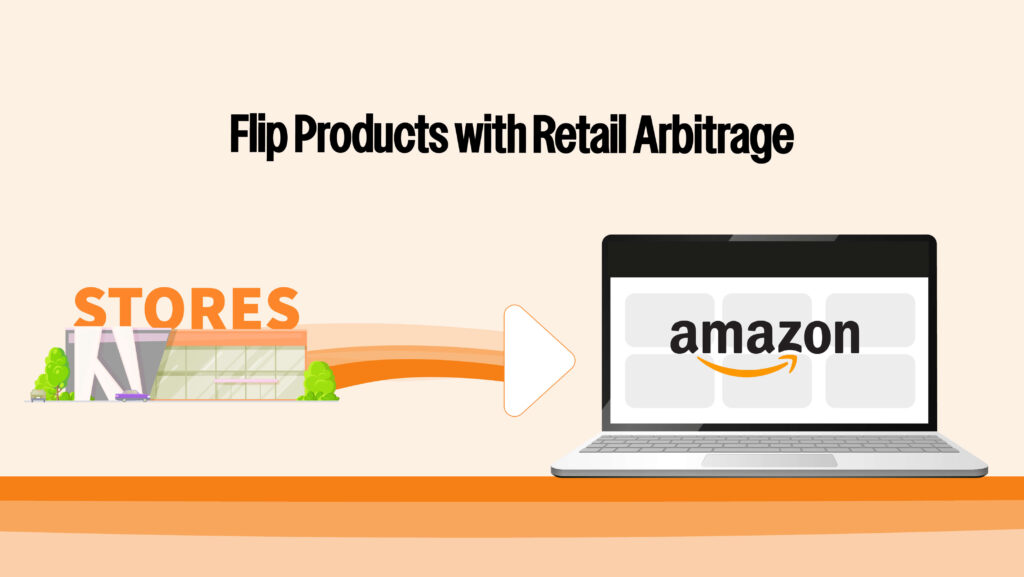
How much money you can make
The amount of money you can earn through online arbitrage depends on factors such as your initial investment, the time you dedicate to researching and sourcing profitable products, and the demand for those products in resale markets.
Some sellers make a few hundred dollars per month starting out as a side hustle, while more experienced sellers who scale their operations can earn thousands of dollars monthly.
It’s important to note that profit margins vary across product categories, so finding high-margin items is key to maximizing income.
How to start
Starting with online arbitrage requires a few key steps.
1. First, identify a platform to resell your products, such as Amazon’s FBA (Fulfilled by Amazon) program or eBay.
2. Next, research profitable niches and use tools such as price tracking software or scanning apps to identify discounted products with resale potential.
3. Once you’ve found products, purchase them in small quantities to minimize risk. Set up your seller account on your chosen platform and list your products with competitive pricing.
4. Lastly, monitor market trends and adapt your strategies to scale your business over time.
Pros and cons
The essential pros and cons of doing online arbitrage on Amazon include the following:
Pros:
- Low startup costs: It’s possible to get started with a minimal initial investment.
- Flexibility: You can work from home and set your own schedule.
- Existing demand: Selling through established platforms often means there’s already a customer base looking for your products.
Cons:
- Time-consuming research: Finding profitable products requires thorough research and consistent effort.
- Competition: The market can be highly competitive, requiring you to stay updated on pricing and trends.
- Fees and logistics: Selling on platforms like Amazon involves fees, and shipping and customer service management can add complexity.
By understanding the fundamentals and potential challenges, online arbitrage can become a viable and scalable income stream when managed effectively.
Method #6: Sell through Amazon Handmade
Selling through Amazon Handmade is an excellent opportunity for artisans and crafters to showcase their unique, handcrafted products to a global audience. Amazon Handmade provides a specialized platform within the Amazon marketplace where personalized and creative items can stand out.
Here’s a closer look at what it takes to get started and what you can expect.
How much money you can make
The income potential on Amazon Handmade varies widely depending on factors such as product type, pricing, and demand. Many artisans find that their earnings depend on the time and effort they dedicate to production and marketing.
Some sellers earn hundreds of dollars per month as a side hustle, while others scale their operations to generate a full-time income. Pricing plays a critical role, and offering unique, high-quality products often results in higher profit margins.
How to start selling arts & crafts on Amazon
To begin selling on Amazon Handmade, you first need to create an Amazon account and apply to join the Handmade marketplace. Amazon evaluates applications to ensure that all products meet their “handcrafted” criteria.
Once approved, you can set up your shop, list your products, upload high-quality images, and include compelling descriptions that highlight what makes your items unique. It’s also essential to optimize listings with keywords to increase visibility.
Pros and cons
There are several pros and cons you should be aware of before you start selling handmade products on Amazon:
Pros:
- Access to Amazon’s massive global customer base.
- A dedicated platform for handcrafted and artisan products.
- Tools and resources provided by Amazon to help sellers grow their businesses.
- Ability to build a brand and gain loyal customers.
Cons:
- A competitive environment with many other artisans.
- Amazon Handmade fees (15% referral fee) and potential challenges with pricing competitively.
- The time-intensive nature of creating handcrafted items.
- Dependence on Amazon’s policies, which can change and affect your business.
With dedication and an emphasis on quality and branding, Amazon Handmade can serve as a rewarding platform for turning your craft into a thriving income stream.
Method #7: Sell merch through Amazon
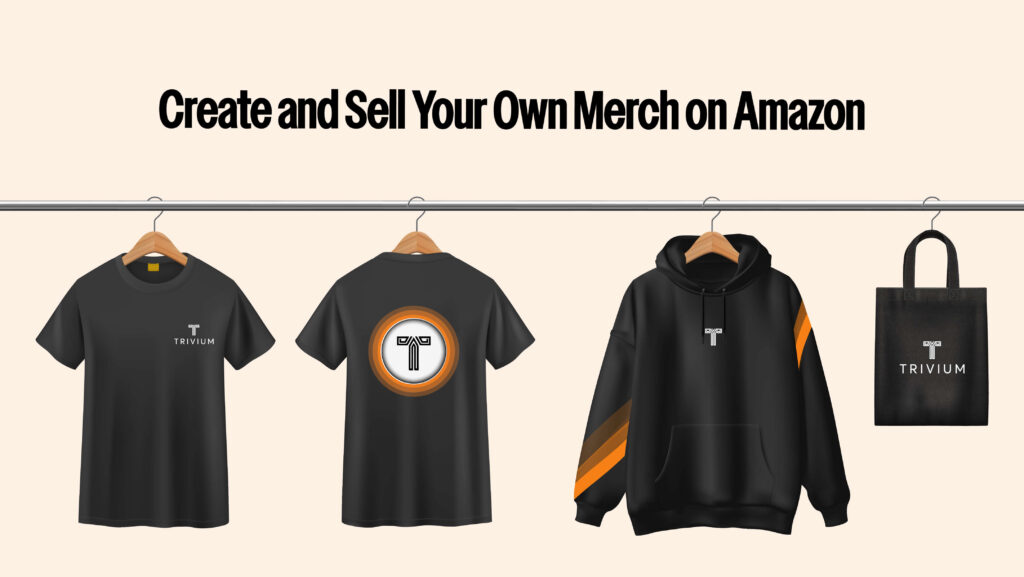
Selling merch through Amazon can be a profitable way to turn your creative talents into a steady income. Whether you’re an artist, graphic designer, or a brand enthusiast, the Merch by Amazon program allows you to design custom apparel and sell it without needing to worry about inventory, shipping, or production. Amazon handles everything, making it a hassle-free option for creatives.
How much money you can make
The amount of money you can earn through Merch by Amazon depends on factors such as the quality of your designs, your target audience, and how well you market your products.
Amazon provides royalties for every item sold, with the exact amount varying based on the product’s price and production costs. Successful sellers often focus on niche designs that appeal to specific groups, as this strategy can significantly boost sales and profits.
How to start selling merch on Amazon
Getting started with Merch by Amazon is straightforward. You’ll need to request an invitation to join the program, as it’s not open to everyone immediately. Once accepted, you can begin uploading your designs and selecting the products you’d like to sell, such as T-shirts, hoodies, or tote bags.
After setting your prices and listing your merch, Amazon takes care of printing, shipping, and customer service. It’s crucial to create high-quality, unique designs and use strong keywords in your listings to increase visibility in Amazon searches.
Pros and cons
The most important advantages and disadvantages of selling merch on Amazon include:
Pros:
- No upfront cost or inventory management.
- Passive income potential through well-performing designs.
- Access to Amazon’s massive customer base.
- Amazon handles production, shipping, and returns.
Cons:
- Approval process can be competitive and selective.
- Royalties are not very high, requiring a large volume of sales to generate substantial income.
- Heavy competition in popular niches.
- Limited design control restricted to Amazon-approved formats and products.
By focusing on creative and targeted designs while understanding the platform’s intricacies, selling merch through Amazon can be a viable way to monetize your artistic skills.
Method #8: Start dropshipping
Dropshipping is an eCommerce business model that allows you to sell products without holding any inventory. Instead of purchasing stock upfront, you partner with suppliers who fulfill orders directly to your customers.
This model is appealing due to its low startup costs and operational simplicity, making it accessible to new entrepreneurs.
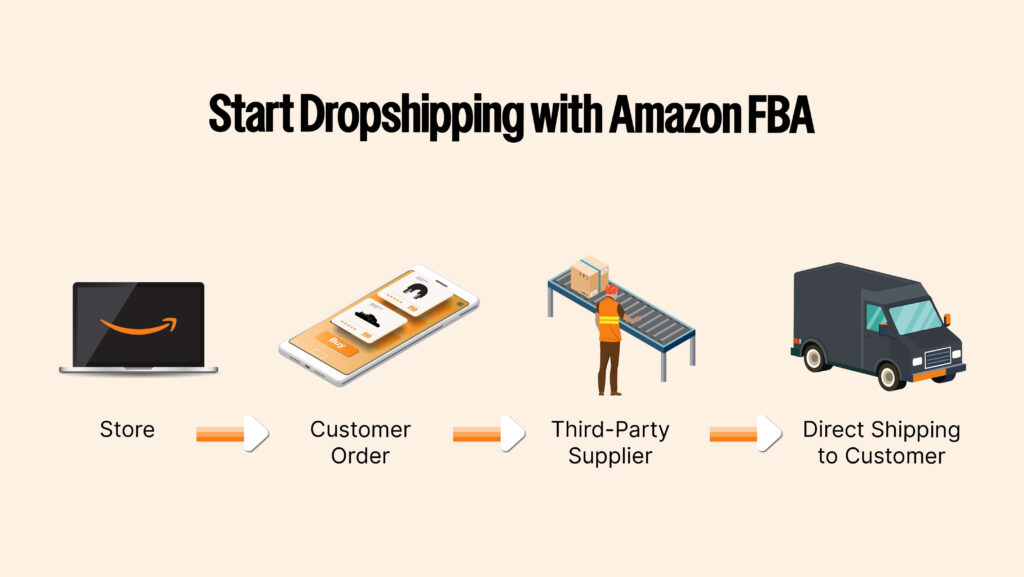
Amazon dropshipping is a bit different than dropshipping on other platforms, in the sense that Fulfilment by Amazon is their version of “dropshipping”.
In other words, you are not fully dropshipping (as you send products towards their warehouse), but you still have the hands-off, no-warehouse-needed advantage that comes with the more “traditional” dropshipping methods.
How much money you can make
The income potential in dropshipping varies widely and depends on several factors such as the niche, pricing strategy, and marketing efforts. Successful dropshippers can earn anywhere from a few hundred dollars per month to six-figure annual incomes.
However, profits are typically influenced by the ability to maintain reasonable margins, as dropshipping can involve higher product costs. Building a trusted brand and optimizing for repeat customers are key to scaling earnings effectively.
How to start
1. To start dropshipping, begin by choosing a niche that aligns with current market trends and your audience’s interests.
2. Research reliable suppliers on platforms like AliExpress, Oberlo, or other wholesale marketplaces.
3. Set up your Amazon store.
4. Optimize your store for user experience and start marketing your products through various channels, including social media, email campaigns, and paid advertisements.
Pros and cons
The essential pros and cons of dropshipping on Amazon include:
Pros:
- Low startup costs as no inventory is required.
- Flexibility to run the business from anywhere with an internet connection.
- A wide range of product choices without the need for storage or logistics management.
- Opportunities to scale quickly with effective marketing.
Cons:
- Lower profit margins due to higher supplier costs and additional fees.
- Dependence on supplier reliability for shipping and product quality.
- High competition in popular niches, requiring a strong differentiation strategy.
- Potential customer dissatisfaction due to longer shipping times with some suppliers.
By carefully choosing a niche, working with reliable suppliers, and maintaining excellent customer relations, dropshipping can be a lucrative and scalable business opportunity.
Method #9: Sell previously loved products
Selling previously loved or secondhand products is an excellent way to promote sustainability while building a profitable business. This method involves reselling gently used items that are still in good condition, such as clothing, electronics, furniture, or collectibles, to consumers looking for affordable alternatives or unique finds.
With growing environmental awareness and the popularity of thrifting, this business model is becoming increasingly appealing to both buyers and sellers.
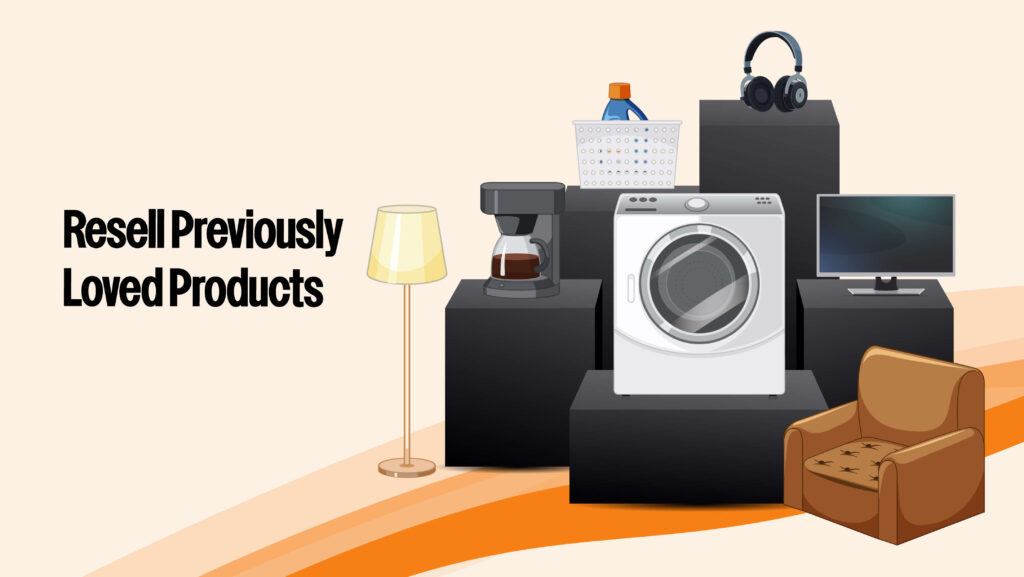
How much money you can make
The income potential in selling previously loved products depends on the types of items you sell, the condition they are in, and the platform you use to market them. While most secondhand sellers earn modest profits on individual items, focusing on high-demand or rare products can result in significant earnings.
For example, vintage clothing, branded goods, or refurbished electronics can command higher price points and increase profits. Dedicated sellers can make anywhere from a few hundred dollars per month as a side hustle to several thousand dollars if they scale their operations.
How to start
Starting a business selling previously loved products is relatively straightforward:
1. Begin by identifying the niche you want to focus on and sourcing items from places like thrift stores, garage sales, or your own belongings.
2. Clean, repair, or refurbish items as needed to make them appealing to customers.
3. Next, choose a platform for sales—options include online marketplaces like eBay, Poshmark, or Etsy, as well as local avenues like Facebook Marketplace or flea markets.
4. Take high-quality photos of your items and write clear, honest descriptions to attract buyers. Pricing competitively and maintaining excellent customer service can help you grow your business over time.
Pros and cons
Here are some of the pros and cons of selling second-hand products on Amazon:
Pros:
- Minimal upfront investment, as items can often be sourced inexpensively or from your own household.
- Environmentally friendly, supporting sustainable practices by extending the life of products.
- Flexibility in choosing the niches or items that interest you the most.
- Opportunity to tap into a market with high demand for affordable and unique products.
Cons:
- Time-consuming sourcing process, particularly if you’re searching for rare or high-demand items.
- Inventory limitations, as the availability of used items can be unpredictable.
- Challenges in accurately pricing items, especially vintage or collectible goods.
- The need to clean, repair, or refurbish certain products, which can increase preparation time.
Despite these challenges, selling previously loved products can be both a rewarding and profitable business, especially when aligned with current trends in sustainability and thrifting.
Method #10: Offer services using Amazon
Offering services through Amazon can be a lucrative opportunity for individuals or businesses with specialized skills or services to share.
Amazon provides a platform for connecting service providers with millions of customers, making it easier to grow a client base and generate income.
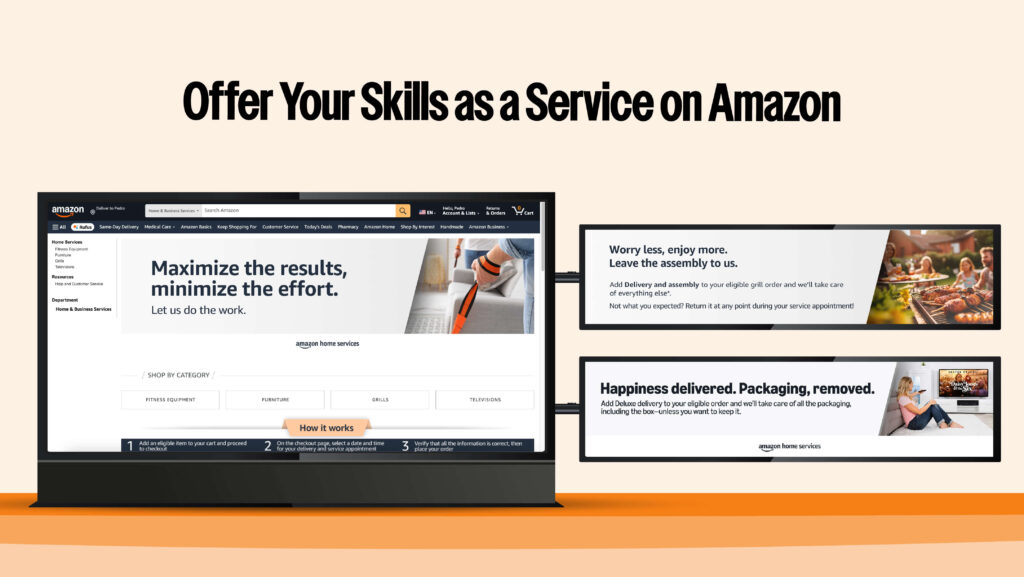
How much money you can make
The amount of money you can earn offering services on Amazon largely depends on the type of service you provide and the demand in your area.
For example, Amazon Home Services allows professionals such as cleaners, handymen, and technicians to list their services and earn competitive rates.
Earnings can range from a few hundred to several thousand dollars per month, depending on the scale of operations, location, and reputation.
Being consistent and providing exceptional service increases the likelihood of repeat customers and positive reviews, boosting income potential significantly.
How to start offering services on Amazon
Starting to offer services on Amazon is straightforward. First, identify the service you wish to provide and ensure you meet any necessary certifications or qualifications. Next, sign up for Amazon’s service marketplace, such as Amazon Home Services, and go through the application and approval process. This may involve background checks and demonstrating your expertise in the field.
Once approved, you can create and customize your service listings with clear descriptions, competitive pricing, and photos if applicable. Responding promptly to customer inquiries and requests is critical to kickstarting your presence on the platform.
Pros and cons
Pros:
- Access to Amazon’s vast customer base provides significant visibility.
- Tools and resources provided by Amazon make managing clients and payments more streamlined.
- Positive reviews on Amazon can enhance credibility and attract more customers.
Cons:
- Amazon takes a percentage of the service fee, which may eat into your profits.
- Competition can be stiff, especially in crowded service categories.
- Maintaining high levels of customer satisfaction is essential to stay competitive and avoid negative reviews.
By leveraging Amazon’s platform, service providers can tap into a wide audience and build a thriving business, despite the challenges of fees and competition.
Method #11: Work as a Mechanical Turk
Amazon Mechanical Turk (MTurk) is a crowdsourcing platform that connects businesses and developers with a global workforce to perform microtasks. These tasks, often referred to as “Human Intelligence Tasks” (HITs), typically require human judgment and cannot be easily automated by machines.
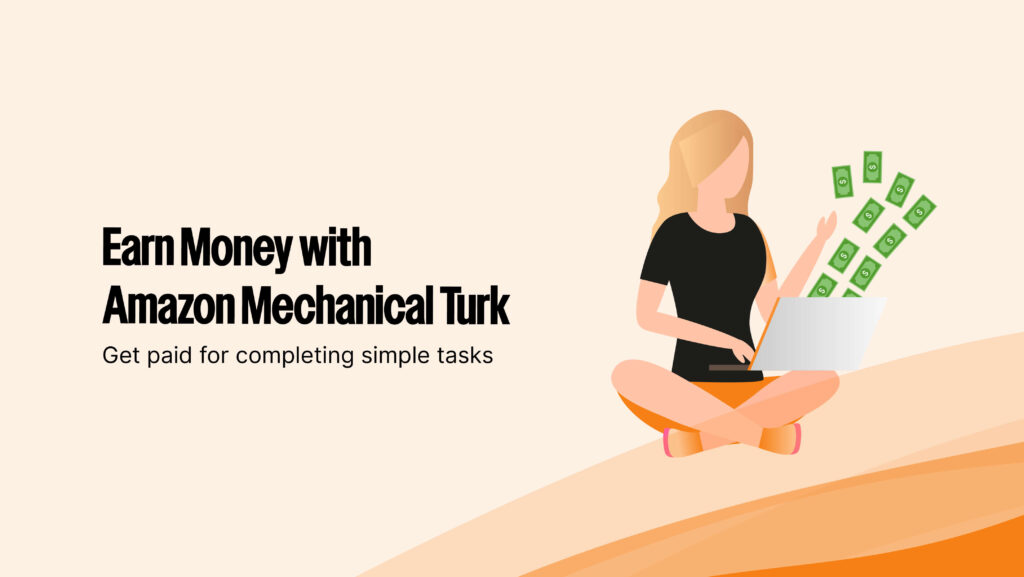
Examples of HITs include data validation, content moderation, surveys, and image categorization.
MTurk provides an opportunity for workers to earn money by completing these tasks remotely, offering flexibility and the ability to choose assignments that fit their skills and schedule.
How much money you can make
Working as a Mechanical Turk, commonly referred to as an MTurker, provides opportunities to earn money by completing small online tasks. The amount you can earn varies greatly depending on the complexity and volume of tasks you take on.
Most tasks pay between a few cents to a few dollars, and dedicated workers can make anywhere from $20 to $50 per day with consistent effort. However, earnings will depend on the availability of high-paying tasks and the time you’re able to commit.
How to start
Getting started as a Mechanical Turk is relatively straightforward. First, you need to sign up on the Amazon Mechanical Turk website and complete an application to join as a worker.
Once your application is approved, you can browse available tasks, also known as HITs (Human Intelligence Tasks), and select the ones that match your skills or interests.
Be sure to read task descriptions carefully and follow the instructions to ensure your work is accepted. Completing tasks reliably over time can help you gain access to better-paying opportunities.
Pros and cons
There are a few advantages and disadvantages to becoming a Mechanical Turk on Amazon:
Pros:
- Flexible work schedule, allowing you to complete tasks whenever it’s convenient.
- A variety of tasks to choose from, ranging from data entry to surveys and transcription.
- No specialized skills or qualifications required to get started.
Cons:
- Pay per task is often very low, and it may take time to find higher-paying opportunities.
- Tasks can be repetitive and tedious.
- Some tasks may require approval before payment, leading to potential delays in earnings.
While working as a Mechanical Turk offers a flexible way to earn extra income, it is not a path to quick wealth and requires dedication to maximize earnings.
Method #12: Work as an Amazon representative
Working as an Amazon representative can be a stable and rewarding employment option.
Amazon offers various representative roles, including customer service positions, virtual assistance, and specialized support teams. These roles are typically designed to help resolve customer issues, provide product information, and ensure customer satisfaction.
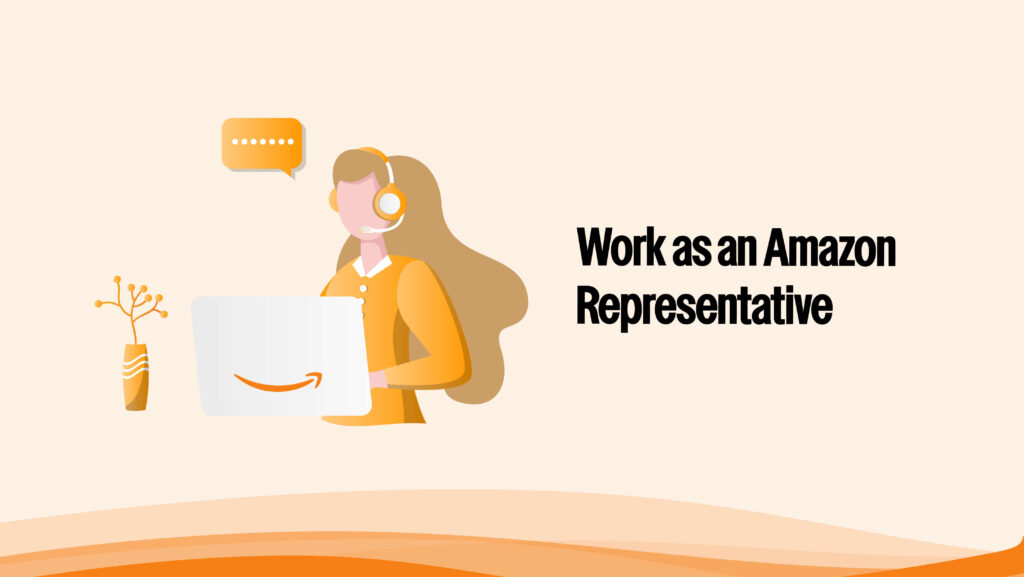
How much money you can make
The salary for an Amazon representative varies depending on the specific role, location, and whether it’s a remote or on-site position. On average, customer service representatives earn between $15 and $20 per hour, with the possibility of additional benefits such as health insurance, paid time off, and retirement plans.
Full-time employees often receive comprehensive benefits packages, which can significantly enhance overall earnings.
How to start
To start working as an Amazon representative, visit Amazon’s career page and search for open roles that match your skills and preferences. Many customer service positions are remote, allowing you to apply from various locations.
Typically, applicants are expected to have strong communication skills, basic computer proficiency, and the ability to work flexible hours. During the hiring process, you may have to complete an assessment and participate in an interview focused on your interpersonal and problem-solving capabilities.
Pros and cons
Pros:
- Competitive hourly pay with potential access to benefits for full-time employees.
- Flexible working hours, particularly for remote roles.
- Opportunities for career growth within Amazon and access to training programs.
Cons:
- Work can be demanding, with high expectations for resolving customer issues quickly and effectively.
- Some roles may involve less flexibility during peak seasons, requiring mandatory shifts or overtime.
- Remote roles may necessitate a quiet, dedicated workspace and reliable internet access.
Working as an Amazon representative is an accessible way to secure consistent income while gaining valuable customer service and problem-solving experience. It can be an excellent option for individuals seeking remote or entry-level employment within a globally recognized company.
Struggling to Scale on Amazon?
Get a free expert audit and uncover quick wins to boost sales and cut ad waste.
Get a Free AuditAmazon: a treasure trove of opportunities
Thankfully for anyone looking to make good money online, Amazon offers plenty of possibilities: from the more entrepreneurial-spirited ones to the side gigs and the full-time employment opportunities, Amazon is a giant ready for any opportunity you might be looking for.
Amazon success begins with a strong foundation. By prioritizing clear strategies and setting measurable goals, you can create a roadmap that drives meaningful progress.
Leveraging the latest tools and technology is equally essential too, as it helps streamline processes and enhances overall efficiency, allowing you to focus on what truly matters.
And if you’re looking for someone to help you grow on Amazon, Trivium is here for you. Contact us, let’s talk about your business goals. We can help you reach them using our decades’ worth of experience in Amazon marketing.
FAQs
Absolutely! With the right approach, such as selling high-demand products or using private labeling, earning $1000 a month on Amazon is achievable for many sellers.
Not entirely. While the Individual Seller plan has no monthly fee, you’ll still need to pay selling fees per item and may need to invest in inventory upfront.
Yes, many sellers earn significant income on Amazon by leveraging strategies like finding profitable products, managing inventory efficiently, and optimizing listings for visibility. However, keep in mind that, like every business opportunity, success on Amazon doesn’t “just happen” — you need to plan, strategize, adapt, and grow continuously.
Students can start small by selling used books, leveraging print-on-demand services like Merch by Amazon, or using retail arbitrage to flip discounted items.
You can make money without selling by enrolling in affiliate marketing through Amazon Associates, publishing books on Kindle Direct Publishing, or offering services like Amazon Mechanical Turk.
Focus on trending or evergreen products with good profit margins, such as electronics accessories, fitness gear, or home goods. Research is key to identifying opportunities.

